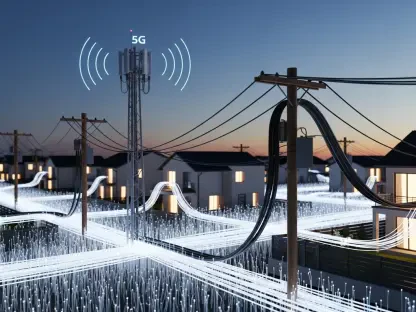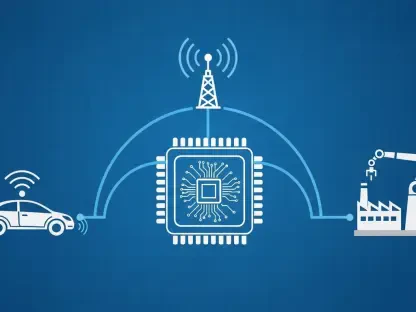As we dive into the future of telecommunications, few names stand out as prominently as Vladislav Zaimov, a seasoned expert in enterprise telecommunications and risk management of vulnerable networks. With 6G on the horizon, promising unprecedented connectivity and integration with cutting-edge technologies like AI, Vladislav offers a unique perspective on how industry giants are positioning themselves for this next leap. In this interview, we explore the intersection of advanced computing and telecom, the strategic moves shaping the 6G landscape, the potential of AI-driven networks, and the challenges of cost and feasibility in adopting new hardware solutions for telecom infrastructure.
Can you share your insights on why major tech companies are increasingly focusing on the telecom sector, particularly with 6G coming up?
Absolutely, Lisa. The telecom sector is at a pivotal moment with 6G, which is expected to revolutionize connectivity by 2030. Companies see this as a massive opportunity to embed their technologies into the backbone of future networks. It’s not just about faster speeds; it’s about enabling a new era of applications—think AI, IoT, and beyond—that will rely on ultra-low latency and massive data throughput. Their interest stems from the potential to dominate markets by providing the hardware and software that power these networks.
What do you think drives a company to invest heavily in partnerships within the telecom space as part of their 6G strategy?
It’s all about positioning for the future. A significant investment, like a billion-dollar stake in a major telecom player, signals a commitment to shaping 6G standards and infrastructure. Such partnerships provide access to expertise, established networks, and influence over how the technology evolves. It’s a strategic move to ensure their solutions—whether hardware or software—are integral to 6G rollout, giving them a competitive edge when commercial networks launch.
How do you see events like industry summits contributing to the development and buzz around 6G?
Industry summits are critical for fostering collaboration and showcasing innovation. They bring together academia, tech leaders, and vendors to discuss early research and technical challenges. At these events, you see companies making bold statements about their vision for 6G, often through keynotes or demonstrations. It’s a platform to build hype, align stakeholders, and set the tone for what’s possible, which is essential for driving investment and interest well before the technology hits the market.
There’s a lot of talk about 6G being a key enabler for widespread AI adoption. Can you explain how that connection works?
Sure, Lisa. 6G is often described as a “connectivity fabric” for AI because it’s designed to support the massive data demands and real-time processing that AI applications require. Unlike previous generations, 6G will provide the bandwidth and low latency needed to distribute AI capabilities—think smart cities, autonomous vehicles, or personalized services—to everyone, everywhere. It’s about making AI seamless and accessible, not just for tech hubs but for entire populations and enterprises.
What kind of impact do you foresee this AI and 6G synergy having on everyday life or business operations?
The impact could be transformative. For individuals, it means smarter devices and services that adapt in real-time—imagine healthcare apps diagnosing issues instantly via 6G networks. For businesses, it’s about efficiency and innovation; logistics companies could optimize routes with AI on a scale we’ve never seen, thanks to 6G’s connectivity. It’s a game-changer, but it’ll also demand new infrastructure and investment to make sure the benefits are evenly distributed.
How do you view the potential for advanced computing hardware, like GPUs, to play a role in telecom data centers?
GPUs have incredible potential in telecom, especially for data-intensive tasks in national data centers or initiatives focused on digital sovereignty. They can handle the heavy lifting for AI workloads, simulations, and network optimization that 6G will demand. The opportunity is huge for companies to supply racks of GPUs for these purposes, as operators look to build robust, future-proof systems that can manage the scale of 6G traffic and applications.
Do you think telecom operators are prepared to adopt such high-powered hardware solutions on a large scale?
It’s a mixed bag. Some operators, especially in advanced markets, are eager to invest in cutting-edge hardware to stay competitive. But readiness varies—many are still grappling with 5G rollouts and might hesitate due to the upfront costs and complexity of integrating GPUs at scale. It’ll take a clear cost-benefit analysis and perhaps some successful early adopters to convince the broader industry to jump on board.
There’s some skepticism about the affordability of using GPUs in telecom, particularly at cell sites. What are your thoughts on these concerns?
The concerns are valid. GPUs are expensive and power-hungry, and deploying them at every cell site for tasks like baseband processing raises questions about sustainability and cost-effectiveness. Critics worry about the operational expenses and whether the infrastructure can support such power demands. It’s a significant hurdle, especially for widespread deployment in less urbanized areas where budgets are tighter.
How do you respond to claims that GPU solutions could be as cost-competitive as traditional hardware in telecom?
I think it’s an optimistic view, but it depends on what costs we’re comparing. If we’re talking development or material costs, GPUs might eventually come down in price with scale. However, operating costs—power consumption, cooling, maintenance—are harder to offset. I’d say it’s possible in specific use cases, like centralized data centers, but for distributed networks, the economics are still a tough sell without major advancements in efficiency.
Looking ahead, what is your forecast for the role of advanced computing in shaping 6G networks over the next decade?
I believe advanced computing, including GPUs and other specialized hardware, will be central to 6G, but not without challenges. Over the next decade, we’ll see a hybrid approach—high-powered solutions in core data centers for AI and big data tasks, paired with more efficient, purpose-built hardware at the edge. The key will be balancing performance with affordability and sustainability. If the industry can crack that, 6G could truly redefine how we connect and compute, paving the way for innovations we can’t yet imagine.









